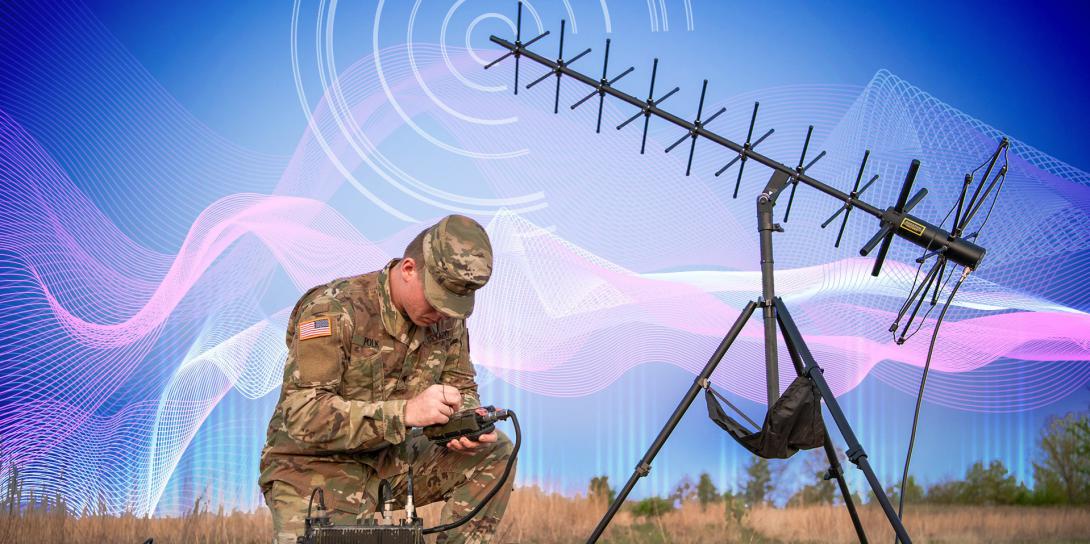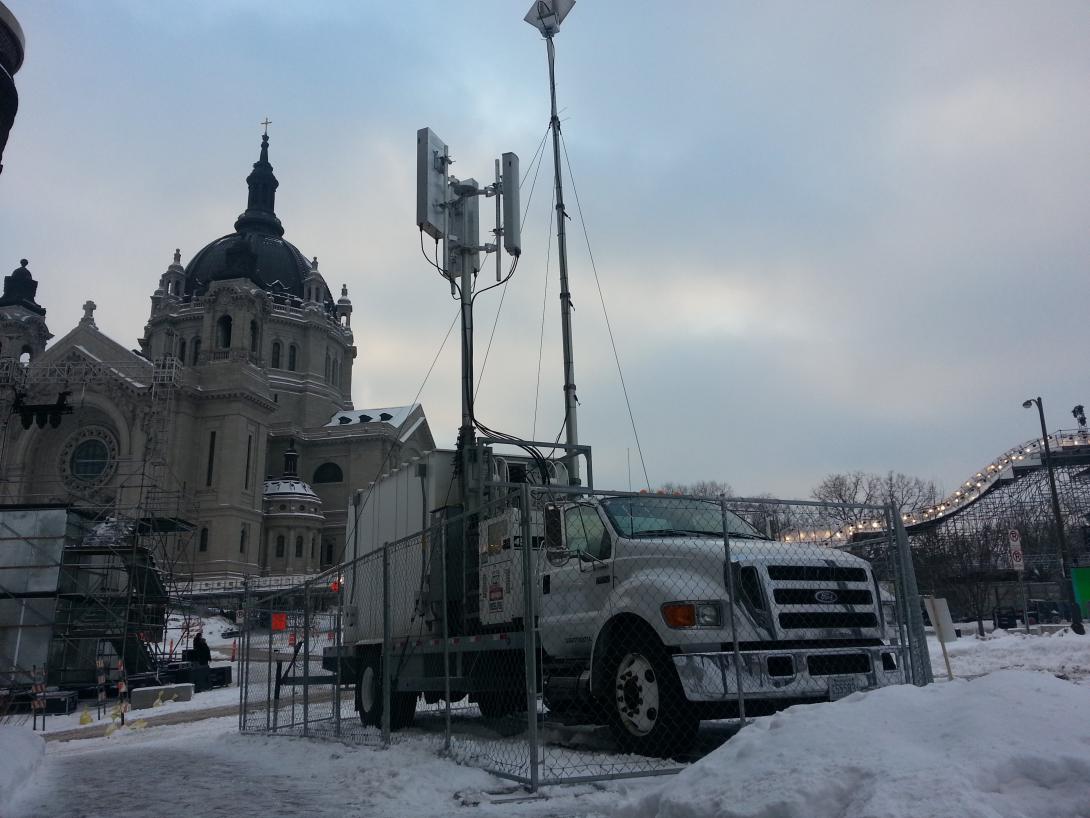U.S. Defense Department Expands 5G Experimentation
The U.S. Defense Department already is looking beyond its massive $600 million investment in 5G experiments announced in October. Plans include a second round of experiments and the potential for expanding efforts with other government agencies and with international partners.
The Defense Department’s initial announcement included five experimental test beds for fifth-generation mobile communications commonly referred to as 5G. Those experiments include a 5G-enabled augmented reality and virtual reality capability for mission planning, distributed training, and operational use at Joint Base Lewis–McChord, Washington; smart warehouse technologies at both Naval Base San Diego and Marine Corps Logistics Base, Albany, Georgia; distributed command and control at Nellis Air Force Base, Nevada; and dynamic spectrum use at Hill Air Force Base in Utah.
The Defense Department effort includes three objectives: accelerating 5G technology at scale, learning to operate with nonsecure networks and innovating to win at 6G and beyond. “We’re looking at how to align and advance 5G communications, networking and computing capabilities with DOD [Defense Department] missions. That’s the most fundamental aspect. And then based on that, accelerate our ability to use 5G and build expertise and experience with the technology,” says Joseph Evans, principal director for 5G, Office of the Under Secretary of Defense for Research and Engineering.
That initial effort has resulted in close to 40 contracts with more than 100 companies. More than half of those companies are considered nontraditional, meaning they normally do not contract with the Defense Department.
Department officials now are planning another round of experiments they refer to as a second tranche. That will bring the total number of experiments to 12. The second tranche likely will include shipwide and pier connectivity at Naval Station Norfolk, Virginia; enhancing aircraft mission readiness at Joint Base Pearl Harbor–Hickam, Hawaii; augmented reality support for medical training and telemedicine at Joint Base San Antonio, Texas; wireless connectivity for tactical operations centers and combat operations centers with the National Training Center at Fort Irwin, California, and Fort Hood, Texas, as well as Camp Pendleton, California; 5G core security experimentation network at Joint Base San Antonio; and 5G-enabled immersive training and education at Tinker Air Force Base, Ohio.
“We’ve gotten a lot done in a very short amount of time. In the past year, we’ve created and published a 5G strategy. We hope to release the implementation plan for that strategy very soon,” Evans reports. “We’ve stood up a working group across the department and gotten all these projects underway—the first set of five and then the additional sites. We’ve identified what’s going to happen and started the solicitation process. It’s been really busy.”
He adds that the department could soon be releasing broad agency announcements (BAAs) focused on the push for sixth- and seventh-generation technologies, or 6G and 7G. “That’s all 2021 starts. We’re looking at BAAs in both of those areas,” Evans says, explaining that officials hope to both accelerate current or emerging capabilities while also looking at security and the future beyond 5G.”
Defense officials also are in the early discussion stages for additional efforts, including the exploration of open technologies and potential cooperative efforts with other government agencies and international partners. Evans defines “open” technology as both open source and having open interfaces, meaning the department could define where interfaces occur on the network. “One of the other things that we expect to be happening in 2021 is we’re really interested in how open 5G implementations can be used by DOD and help invigorate U.S. industry. We’re looking at how we bring new players into the 5G environment, particularly from the U.S. software industry, which is so strong.”
If the department can define the interfaces, it can “mix and match” parts. “We believe that idea of being able to mix and match subsystems opens up the market for new players and offers DOD the opportunity to have greater insight into the network but also maybe bring greater capability, the ability to bring the best 5G subsystems to play. That’s what we’re trying to do and why we’re really excited about it,” Evans elaborates.
He says it is simply too early to provide much detail, but he hints that the department could initiate an open 5G challenge. “We’re trying to see how we can put together something that might be like an open 5G challenge or something along those lines,” he says. “Our current thinking is that we will start with a request for information or a request for comments. Let’s just say it will happen real soon now. We’d like to get that kicked off by the middle of 2021 if not before.” He adds that Defense Department efforts often take longer than planned but says officials will move as soon as possible.
Additionally, officials are exploring more cooperative efforts with other government agencies. “There’s also an inter-agency working group that’s been set up by NITRD, the National Information Technology Research and Development clearing house or coordination office. We’re also looking to collaborate with other agencies through that mechanism,” Evans reveals.
The department already is working with the National Science Foundation’s Platform for Advanced Wireless Research (PAWR) program, which is exploring capabilities beyond 5G. NSF provided a hard-wired facility for the Defense Advanced Research Projects Agency’s (DARPA’s) Spectrum Collaboration Challenge known as SC2.
Now, they will help the Defense Department move beyond wired capabilities. “What we’re working on with the NSF folks is really twofold: one, how you take that open air—not hard-wired any more but open-air spectrum—as well as basically how you integrate that with 5G, so how you take the decision engines that came out of the Spectrum Collaboration Challenge and marry them to some of the nascent open 5G stacks,” Evans explains. “We’re working that with the NSF PAWR folks in Salt Lake City because they’re one of the [Federal Communications Commission] innovation zones, and we think that we can do that sort of open-air spectrum experiments a little more easily there.”
DARPA already claims one success working with the PAWR program.
“We did start several kick-starter efforts. One of those that has already done a demo, a collaborative effort with DARPA and the National Science Foundation where we took some resilient networking technology developed on a DARPA program, combined that with some early-stage 5G capabilities on the NSF PAWR test bed and then backhauled all of that to show interoperability and the ability to reach back, backhauled that over the SpaceX Starlink constellation.”
International efforts also are a possibility. “I can say we are in early discussions with international partners on how to collaborate best both on the use of our test beds as well as the use of test beds partners may be standing up,” Evans offers.
Asked whether a third tranche is possible, Evans acknowledges the potential. “We are looking toward that. I have to caveat everything by saying it all depends on funds availability, but we have been looking at other sites and experiments that we could be performing.”
Early successes with the initial five experiments include the acquisition of capabilities similar to a cell tower but on a truck. One of the Cell on Light Trucks, or COLTs, systems already has been delivered “to start building expertise with the 5G technology quickly. We expect a couple more of those to be in place in early 2021,” he adds.
The COLTs could provide major benefits. “We think that’s a really interesting capability for DOD because we have then the ability to move around some of the 5G communications infrastructure, which makes it more survivable,” Evans says.
For the experiment at Nellis Air Force Base, for example, officials will attempt distributing a combined air operations center, which traditionally is in one location. “We’re first looking at dispersing that by putting the operators that are using the air operations software into vehicles that look like vans and that sort of thing, and then the cellphones on light trucks provide the communications infrastructure to allow them to pass traffic,” Evans elaborates. “So, the first phase of the program is to disperse the air operations functions. The second part is to see if we can make it nomadic so you can drive to a new location and then quickly set up and perform the necessary functions.”
That experiment includes a third phase to push boundaries even further, attempting to allow both the air operations center and the cell tower-type capability to operate while mobile. Evans notes that industry will sometimes use COLTs for major events. For example, the trucks supplement cellphone usage at events, such as the National Football League championship game when mobile phone usage peaks. They also are sometimes used during disaster recovery efforts.
But in both of those cases, the trucks remain in fixed locations. “What we want to do is push the edge on that and see how we can make that even more nomadic, the ability to set up and tear down quickly as well as whether we can actually make that mobile,” Evans says.







Comments